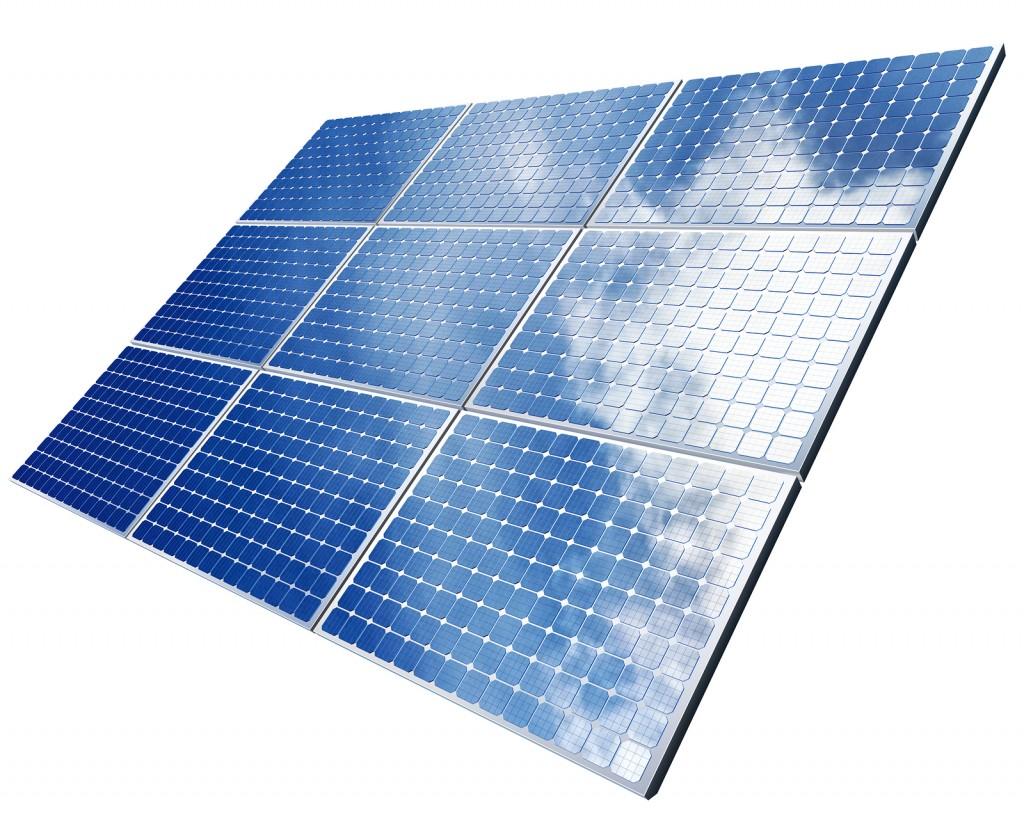Transparent Solar Panels Market: Powering a Clearer, Greener Future

The solar industry has long symbolized the shift toward clean and renewable energy. Yet, a new breakthrough technology is transforming how and where solar power can be generated — transparent solar panels. By integrating photovoltaic (PV) capabilities into windows, facades, and even smartphone screens, transparent solar technology is redefining the very concept of solar energy utilization.
The Transparent Solar Panels Market is gaining rapid global momentum as architects, manufacturers, and energy innovators recognize its potential to revolutionize building design, transportation, and consumer electronics. This next-generation solar technology promises to blend aesthetics, efficiency, and sustainability, paving the way for energy-generating surfaces across cities and smart infrastructure.
Understanding Transparent Solar Panels
Transparent solar panels, also known as clear or see-through photovoltaics (TPVs), are designed to capture light energy while allowing visible light to pass through. Unlike traditional opaque solar modules, transparent panels can be embedded in glass structures without obstructing visibility — making them ideal for integration into building windows, skylights, and display screens.
How They Work:
Transparent solar panels selectively absorb ultraviolet (UV) and infrared (IR) light — invisible portions of the spectrum — while letting visible light pass.
They use organic photovoltaic materials, perovskite films, or transparent conductive oxides to generate electricity.
This enables everyday surfaces to double as energy generators without altering architectural design.
By merging energy generation with design flexibility, transparent solar panels offer a revolutionary approach to urban sustainability and smart infrastructure development.
Market Overview
The Transparent Solar Panels Market is evolving from a research-driven innovation to a commercially viable industry. Growing emphasis on net-zero energy buildings, smart cities, and sustainable architecture is fueling the adoption of transparent PV solutions across residential, commercial, and industrial sectors.
Architects and developers are increasingly using these panels to transform building envelopes into active energy sources. Similarly, the technology is being explored for automotive applications, mobile devices, and greenhouse systems, expanding its reach beyond conventional solar markets.
Global energy policies encouraging renewable integration, coupled with advancements in material science and nanotechnology, are creating a fertile ground for the growth of transparent solar systems.
Key Market Drivers
1. Rising Demand for Building-Integrated Photovoltaics (BIPV)
Transparent solar panels are a cornerstone of BIPV technology, which integrates PV systems directly into building components. They replace traditional materials like glass with energy-producing alternatives, making skyscrapers and residential homes more energy efficient.
2. Government Incentives and Green Building Regulations
Policies promoting energy-efficient construction and carbon-neutral buildings are driving market adoption. Transparent solar panels help developers meet LEED, BREEAM, and other sustainability certifications.
3. Advancements in Material Science
Breakthroughs in organic photovoltaics, perovskite films, and thin-film coatings have enhanced transparency, flexibility, and conversion efficiency, bringing the technology closer to mass commercialization.
4. Aesthetic and Functional Advantages
Unlike traditional solar panels that occupy roof space, transparent panels offer dual functionality — power generation and aesthetic design. Their versatility supports modern architectural creativity without compromising energy goals.
5. Growing Smart City and IoT Integration
As smart cities evolve, transparent solar panels provide an ideal solution for energy-autonomous buildings, smart windows, and connected infrastructure.
Market Segmentation
By Technology
Transparent Photovoltaic (TPV) Glass: Used in architectural glazing and building facades.
Organic Photovoltaics (OPV): Lightweight, flexible panels suitable for windows and consumer devices.
Perovskite-Based Transparent Panels: Offer high efficiency and adaptable transparency levels.
Thin-Film Transparent Panels: Ideal for commercial and automotive integration.
By Application
Building-Integrated Photovoltaics (BIPV): Energy-generating glass for commercial towers and residential projects.
Automotive: Transparent panels embedded in vehicle sunroofs and windshields.
Consumer Electronics: Smartphones, tablets, and IoT devices powered by ambient light.
Agriculture and Greenhouses: Transparent solar coverings that optimize light for plant growth while generating power.
By End User
Residential Buildings
Commercial and Industrial Complexes
Automotive Manufacturers
Technology and Electronics Companies
Agricultural Enterprises
Technological Trends
Smart Window Integration
Transparent solar panels are increasingly being integrated into smart windows that can control light transmission and generate energy simultaneously. These windows adjust tint and transparency levels while supplying electricity to building systems.
Perovskite Solar Innovations
Perovskite materials are transforming the transparent solar space with higher energy efficiency and lower manufacturing costs. Researchers are developing semi-transparent perovskite cells that combine clarity with excellent performance.
Flexible and Lightweight Films
Thin-film technology enables bendable and lightweight transparent solar panels, ideal for curved surfaces, portable devices, and automobiles.
Self-Charging Electronics
In the consumer electronics sector, transparent solar films are being developed for self-charging phones, tablets, and wearables, promoting longer battery life and reducing electronic waste.
Nanotechnology and Coating Advances
Nano-engineered coatings enhance UV and IR absorption while maintaining glass transparency. This innovation is crucial for optimizing performance in architectural applications.
Regional Insights
North America
North America is a key adopter of transparent solar technology, driven by smart building initiatives, green construction incentives, and corporate sustainability programs. The U.S. is leading research into transparent photovoltaic glass for high-rise buildings.
Europe
Europe’s stringent renewable energy and energy-efficiency regulations are accelerating adoption. Countries such as Germany, France, and the Netherlands are pioneers in BIPV applications and transparent solar R&D projects.
Asia-Pacific
Asia-Pacific represents one of the fastest-growing regions for transparent solar panels, fueled by rapid urbanization, government incentives, and expanding solar manufacturing capabilities in China, Japan, and South Korea.
Middle East & Africa
Rising investment in smart cities and energy diversification in Gulf countries has opened new opportunities for transparent solar integration in futuristic building designs.
Latin America
Increasing solar potential, combined with sustainable architecture trends, is encouraging transparent solar adoption across commercial developments in Latin American markets.
Competitive Landscape
The Transparent Solar Panels Market features a dynamic mix of technology startups, solar manufacturers, and glass producers investing in R&D and commercialization.
Prominent participants include:
Ubiquitous Energy
Heliatek GmbH
Onyx Solar Group
Polysolar Ltd.
Brite Solar Technologies
SolarWindow Technologies, Inc.
Physee Group
Oxford PV
ClearVue Technologies Ltd.
Glass to Power S.p.A.
These companies are developing next-generation materials, improving optical clarity, and pursuing partnerships with construction and automotive industries to scale adoption.
Challenges and Opportunities
Challenges
High manufacturing costs compared to traditional PV modules.
Lower energy conversion efficiency in early-stage transparent technologies.
Durability and weather-resistance challenges for outdoor applications.
Complex integration with existing architectural and glazing systems.
Opportunities
Increasing demand for zero-energy buildings and green architecture.
Expansion into consumer electronics and smart glass markets.
Collaboration between solar manufacturers and glass producers to improve scalability.
Research breakthroughs in perovskite and organic photovoltaic materials to enhance transparency and performance.
Future Outlook
The future of the Transparent Solar Panels Market lies in material innovation, cost optimization, and large-scale integration with building and automotive applications. As cities worldwide aim for carbon neutrality, transparent solar glass will become a cornerstone of energy-positive architecture.
Technological convergence — combining solar generation with smart window controls, AI-based energy management, and IoT integration — will redefine how urban infrastructure interacts with sunlight. The ongoing shift from passive to active energy-generating surfaces marks a fundamental evolution in sustainability.
In the near future, transparent solar technology will enable a world where every window, façade, and screen becomes a source of clean energy — invisible, intelligent, and indispensable.
Final Thoughts
The Transparent Solar Panels Market represents the next wave of renewable innovation — merging energy efficiency with elegant design. By transforming ordinary glass into a power-generating surface, transparent solar panels promise to reshape architecture, transportation, and consumer electronics.
As technological advancements improve performance and scalability, transparent solar solutions will illuminate the path toward a greener, smarter, and more self-sustaining world — where every view of the future is powered by the sun.




